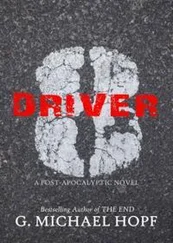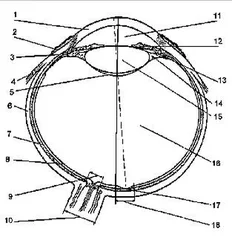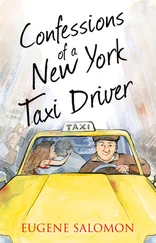State of New Jersey Motor Vehicle Commission - Driver Manual
Здесь есть возможность читать онлайн «State of New Jersey Motor Vehicle Commission - Driver Manual» весь текст электронной книги совершенно бесплатно (целиком полную версию без сокращений). В некоторых случаях можно слушать аудио, скачать через торрент в формате fb2 и присутствует краткое содержание. Жанр: sci_state, Юриспруденция, sci_transport, на английском языке. Описание произведения, (предисловие) а так же отзывы посетителей доступны на портале библиотеки ЛибКат.
- Название:Driver Manual
- Автор:
- Жанр:
- Год:неизвестен
- ISBN:нет данных
- Рейтинг книги:4 / 5. Голосов: 1
-
Избранное:Добавить в избранное
- Отзывы:
-
Ваша оценка:
- 80
- 1
- 2
- 3
- 4
- 5
Driver Manual: краткое содержание, описание и аннотация
Предлагаем к чтению аннотацию, описание, краткое содержание или предисловие (зависит от того, что написал сам автор книги «Driver Manual»). Если вы не нашли необходимую информацию о книге — напишите в комментариях, мы постараемся отыскать её.
Driver Manual — читать онлайн бесплатно полную книгу (весь текст) целиком
Ниже представлен текст книги, разбитый по страницам. Система сохранения места последней прочитанной страницы, позволяет с удобством читать онлайн бесплатно книгу «Driver Manual», без необходимости каждый раз заново искать на чём Вы остановились. Поставьте закладку, и сможете в любой момент перейти на страницу, на которой закончили чтение.
Интервал:
Закладка:
Unless directed to do so by a police officer or to avoid an accident, a motorist should never stop or park at any of the following places:
* On a crosswalk
* Between a safety zone for pedestrians and the adjacent curb or within 20 feet of the end of the safety zone
* Near properly marked street construction
* In a space on public or private property marked for vehicle parking for the handicapped (unless legally authorized)
* On an interstate highway
* On a sidewalk
* In a bus stop zone
* In front of a public or private driveway
* Within an intersection
* Within 10 feet of a fire hydrant
* Within 25 feet of a crosswalk at an intersection, or side line of a street or intersection highway, except at alleys
* Within 50 feet of a railroad crossing
* Within 50 feet of a stop sign
* Within 20 feet of the driveway entrance to any fire station and within 75 feet on the street opposite a fire station entrance
* On any bridge or elevated roadway or in any tunnel
* Next to another vehicle parked at the curb (double parking)
* In an area where parking is prohibited by municipal ordinance
In case of mechanical trouble or other emergency, a motorist should stop on the right highway shoulder and turn on emergency flashers.
Cellular telephones
State law prohibits the use of handheld electronic devices (e.g., cellular telephones) while driving a motor vehicle on any public road or highway. As of March 1, 2008, using a handheld cellular telephone or texting device is a primary offense. Law enforcement may stop and cite a motorist specifically for these actions. Motorists are permitted to use a hands-free cellular telephone if it does not interfere with any federally required safety equipment or with the safe operation of the vehicle. Although the use of a hands-free cellular telephone is legal, it is strongly discouraged. A handheld cellular telephone may be used only in certain emergency situations, which include:
* Fire
* Traffic accident
* Serious road hazard
* Medical emergency
* Hazardous material emergency
Motorists in the above-mentioned circumstances must keep one hand on the steering wheel while using a handheld telephone. To prove legal use of a handheld telephone while operating a motor vehicle, a motorist may be asked to produce testimony or written statements from appropriate authorities, or telephone records. Fines for breaking this law range between $100 and $250.
A graduated driver license (GDL) motorist may not use a handheld or
hands-free cellular telephone, or any other handheld electronic device, when behind the wheel. Doing so is a violation of GDL restrictions (N.J.S.A. 39:3-13, 39:3-13.2A, 39:3-13.4).
A school bus driver may not use a handheld or hands-free cellular telephone while operating the school bus, except in an emergency situation or when the school bus is parked in a safe area off of a highway (N.J.S.A. 39:3B-25).
Littering
Throwing trash, debris or rubbish from a moving or parked vehicle is illegal. Litter is a safety hazard and an eyesore. Fines of up to $1,000 may be imposed on motorists found throwing dangerous objects from a vehicle onto a roadway. If the vehicle is moving when litter is thrown, the motorist may lose his/her license. All trash, debris or rubbish carried in a vehicle must be covered to keep it from littering the roadway (N.J.S.A. 39:4-63, 39:4-64).
Chapter 5. Prevent a Collision (Defensive driving)
Prevent a collision
Most collisions are caused by motorist error. A motorist can reduce the chances of a collision by knowing and using the standard collision-prevention formula:
* Be alert: Never think the other motorist will not make a driving mistake.
* Be prepared: Learn what to do in any situation when you have to act fast, and always expect the unexpected.
* Act in time: Try not to panic. Know what to do if something happens suddenly
Aggressive Driving/Road Rage
Emotions can have a great affect on a motorist’s driving. If a motorist is angry or excited, he/she should take time to cool off. Aggressive driving is defined as a progression of unlawful driving actions, such as speeding, improper or excessive lane changing, or improper passing. Aggressive drivers fail to consider how their actions behind the wheel may affect other motorists on the road. When behind the wheel, a motorist should always remain calm and follow the rules of the road. Extreme cases of aggressive driving may lead to road rage.
Road rage occurs when motorists lose their tempers or become frustrated because of a traffic disturbance. These aggressive motorists may run stop signs and red lights, speed, tailgate, weave through traffic, pass illegally on the right, make improper and unsafe lane changes, make hand or facial gestures, scream, honk horns or flash high beams. In extreme cases, aggressive motorists may cause a collision.
New Jersey is waging a campaign against road rage. The state has specially trained enforcement patrols to help stop aggressive motorists. To report an aggressive motorist call (888) SAF-ROAD or cell phone #77.
Note: While there are emergency exceptions to the hand held cellular phone law, it is always safest to pull over to the side of the road before making a call.
Distractions
Operating any motor vehicle requires the motorist’s full attention. In many cases, collisions are caused by a distracted motorist. Inattentive motorists often tailgate, go too fast or drift out of their lanes. They ignore traffic signs and signals, road markings, potential traffic hazards, road conditions and other vehicles. Some causes of inattentive driving are:
* Lighting a cigarette
* Trying to fasten a safety belt while driving
* Reaching across the seat to close a door or look in the glove compartment
* Reaching for coins in pockets while driving up to a toll booth
* Trying to wind or adjust a wristwatch
* Watching children or pets in the vehicle
* Trying to remove a coat
* Reading maps and newspapers
* Eating while driving
* Adjusting a mirror while driving
* Using a cellular phone
* Adjusting the radio or CD player
* Shaving
* Using a laptop computer or fax machine
* Applying makeup
A motorist should never do any of these while driving. His/her full attention must be on the road at all times.
Tired driver/Highway hypnosis
A tired driver is a dangerous driver. A tired driver cannot drive well and his/her reaction time is reduced. The motorist may also get upset more easily or even fall asleep behind the wheel. A tired driver can be as dangerous as a drunk driver. Maggie’s Law, which was enacted in June 2003, makes it illegal to knowingly drive a vehicle while impaired by lack of sleep. This law establishes driving while fatigued as recklessness under the vehicular homicide statute (N.J.S.A. 2C:11-5).
When a motorist has been behind the wheel for a long time, he/she may experience “highway hypnosis.” This trance-like state may be avoided by not looking at any one thing for more than a few seconds. It is recommended that a motorist rest every two hours and/or share the driving with another licensed motorist.
Drowsy Driving – Who is Most at Risk?
The motorists most at risk are:
* Sleep deprived
* Driving long distances without rest breaks
* Driving through the night or at other times when they are normally asleep
* Taking medicine that increases sleepiness, or drinking alcohol
* Driving alone
* Driving on long, rural, boring roads
* Young people
Читать дальшеИнтервал:
Закладка:
Похожие книги на «Driver Manual»
Представляем Вашему вниманию похожие книги на «Driver Manual» списком для выбора. Мы отобрали схожую по названию и смыслу литературу в надежде предоставить читателям больше вариантов отыскать новые, интересные, ещё непрочитанные произведения.
Обсуждение, отзывы о книге «Driver Manual» и просто собственные мнения читателей. Оставьте ваши комментарии, напишите, что Вы думаете о произведении, его смысле или главных героях. Укажите что конкретно понравилось, а что нет, и почему Вы так считаете.









![Nicholas Timmins - The Five Giants [New Edition] - A Biography of the Welfare State](/books/701739/nicholas-timmins-the-five-giants-new-edition-a-thumb.webp)

